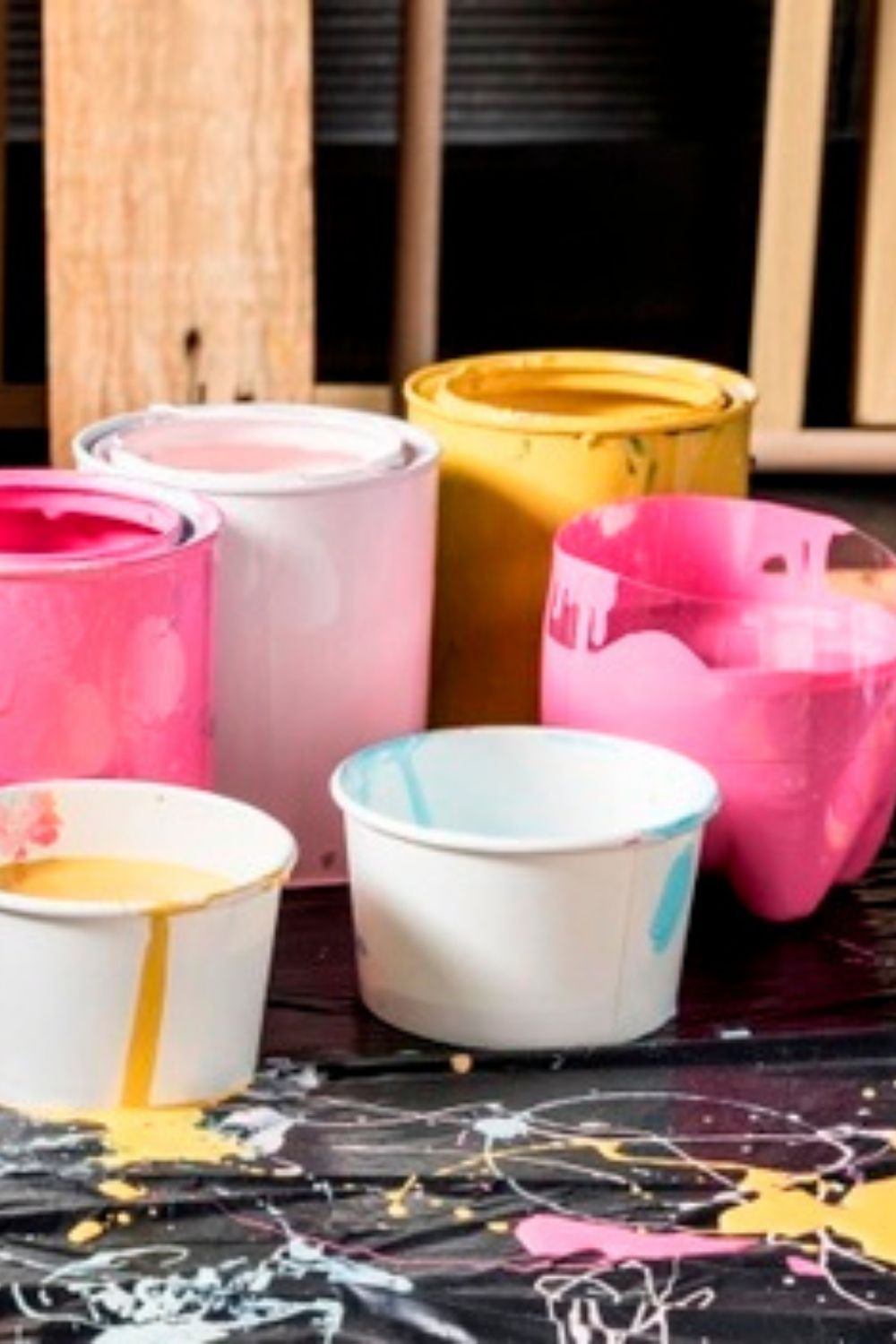Mixed paint is great to have around the house. Walls, trim, ceilings, doors, cabinets, and other surfaces can take a beating over time. Occasional paint touch-ups keep your home looking fresh and sparkling. But if the leftover paint was purchased some while ago, you might wonder how long paint lasts and whether you can still use it. Are there any overt signs that the paint has gone bad?
Mixed Paint Shelf Life Estimates
When evaluating the longevity of paint, storage condition is the key factor that can change shelf life from months to years. Latex paint in pristine original condition, still sealed from the paint store and never used, might last up to a decade. A previously used can of the same type of paint, poorly sealed shut and with unwanted impurities, might last for only a few months. Liquid on the top and solids on the bottom do not necessarily mean that the paint is bad. All paint will separate over time. Instead of stirring by hand, take the paint back to the store where you purchased it and have them shake it up on the mixer.
| Paint Type | Lifespan |
| Latex or Acrylic-Latex Paint | 2 to 10 years |
| Oil-Based Paint | 2 to 15 years |
| Chalk Paint | 1 to 5 years |
| Milk Paint | 1 to 7 days |
Latex or Acrylic-Latex Paint
Manufacturer estimates of paint shelf life are usually on the conservative side. PPG, the manufacturer of PPG Paints and Glidden Paints, estimates that an unopened can of latex paint will last for two years. For some of its paints, Sherwin-Williams estimates paint shelf life to be one year. Less specific, Behr notes that its interior latex paint’s shelf life is “years.” However, the consensus among paint and home improvement experts is that latex paint that has been well preserved has a shelf life of as much as 10 years.
Oil-Based Paint
Paint manufacturers basically mirror expiration date estimates of oil-based paint with that of latex paint. Yet because oil-based paint contains so many solvents, it does tend to last longer than water-based latex paints. So, oil-based paints, if preserved well, can last up to 15 years and possibly even more.
Chalk Paint
The official estimate of chalk paint’s longevity from manufacturer Annie Sloan is one year, though the company notes that it can “potentially last for several years.” Chalk paint does not film over like latex paint, but it will develop an overall thicker consistency. Old chalk paint that has thickened can be revived by adding water.
Milk Paint
Mixed milk paint lasts only a day or two due to the inclusion of milk proteins. If refrigerated, milk paint may last up to a week. Some milk paints have additives that preserve them longer. Milk paint with its base and pigments still in dry, powdered form will last indefinitely, as long as it is kept dry and cool.
Signs That Paint Has Gone Bad
Rancid- or Sour-Smelling Paint
After the lid is opened, some paint might have a sharp smell: rancid, foul, or sour. Other paint might smell like mold or mildew. If the smelly paint is applied, the smell may lessen but not disappear. Bacterial growth is the driver behind this smell.
Paint Has Been Repeatedly Frozen and Thawed
While you should try to prevent your mixed paint from freezing, one manufacturer, Glidden, states that frozen paint can be successfully thawed and used, as long as it is not clumpy and does not exhibit a foul odor. Paint experts, though, tend to agree that repeated freeze-thaw cycles will eventually break down paint.
Overly Lumpy Paint
It is natural for latex paint to develop a film on the top after some time. But if the paint has solidified past the point of a thin film, it is time to discard the paint. Solidified paint chunks cannot be dissolved by adding water.
Jelly-Like Paint
One indication that paint is past its prime is when it is entirely or partially jelly-like: neither solid nor liquid but an in-between goopy substance that refuses to mix smoothly.
How to Preserve Paint for a Long Shelf Life
- Store the paint in a cool, dry place.
- Never allow the paint to freeze.
- Avoid all temperature spikes, whether high or low.
- Remove all impurities, especially organic matter such as leaves or grass.
- Place paint in a plastic container since rust from metal cans might contaminate the paint.
- Before closing the lid, lay plastic kitchen wrap over the open container, then firmly tap down the lid, preferably with a rubber mallet to avoid denting the can.





